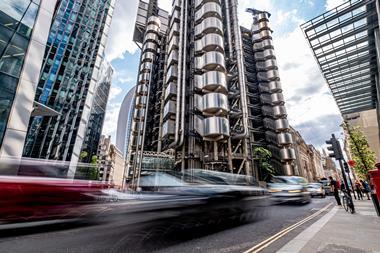John Jackson says this summer’s flooding is nothing compared to what is to come, so the solving the problem should now reach the status of a national emergency
The outlook for flooding of domestic and business premises, even on the most conservative estimate, is a frightening scenario. It is almost certainly going to be the centre of an increased political battleground, nationally and locally.
Experts are predicting that floods such as have been witnessed this summer, which once occurred every 150 years, are now likely to happen every 20 to 30 years by 2080. National average rainfall is predicted to increase by as much as 20%.
In Wales, the annual cost of flooding is expected to rise from £70m a year by 2080 to £1.4bn. Parts of the east coast of Scotland, including Edinburgh, are also at high risk, while in London winter rainfall is expected to rise by 30%.
The number of people at high risk in England and Wales will more than double from around 1.5 million a year at present to more than 3 million in the 2050s, while the average annual damage will increase from a little over £1bn today to more than £12bn in the 2050s.
These are not figures put out by the alarmist Al Gore school of environmental predictions, but the sober calculations of serious scientific organisations. Moreover, the need to spend considerably more on improving infrastructure must now be a government priority.
Into this nightmare scenario is the government plan to build 3 million more houses. But what happens when all these houses have been built? Given the frightening figures for net immigration alone, unless action is taken by government, it will worsen. So, more houses will have to be built just to keep pace with increased immigration.
Houses – as in Japan and the Mediterranean area – will have to be built above ground, as scientists warn that climate change during this century will even overcome improved flood barriers and coastal defences.
This gloomy picture puts special challenges on insurers and risk managers. Insurers will have to take a very tough stand with government, local authorities and developers. In the bluntest language they will have to make clear well in advance that, where houses are built on risky sites, there will be no insurance or that premiums will be extremely high.
That will concentrate the minds of all concerned, not least potential buyers, and certainly house prices.
Indeed, the entire insurance industry should come together and blacklist the worst areas to be developed. Only when sectors of industry take a united stand does government listen.
So much concrete is being poured on to our once green and pleasant land – roads included – that even areas not currently prone to flooding could find themselves at risk.
There is also a need for the government to start treating flooding as a national emergency. As a start, the government should bring responsibility for tackling flood prevention to a single agency – rivers, coastline, drainage and water on roads – currently the responsibility of different public bodies.
Public funding should be sufficient to do the job. Current flood spending is £570m but insurers believe this should be £750m – a very modest request, which itself is inadequate.
Prime Minister Gordon Brown has promised £800m – but not for another four years. Woefully inadequate!
It is time for hand-wringing to stop. And, please, no committees and ‘focus groups’ to look at the problem!
What is required is a Churchillian “Action This Day”.
In Hull one flood victim in four was uninsured – even the city council had no insurance, yet faces a £100m bill for schools alone. Hand-in-hand with adequate funding and improved infrastructure must go social and municipal responsibility. Meanwhile, the sales of caravans and umbrellas look set fair for the foreseeable future.





































